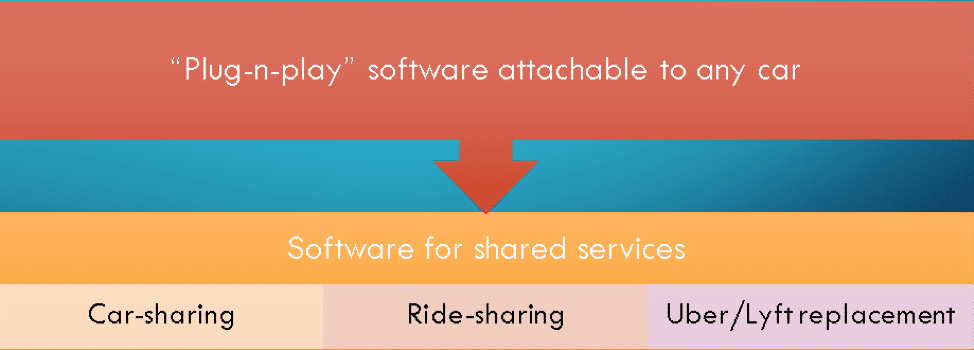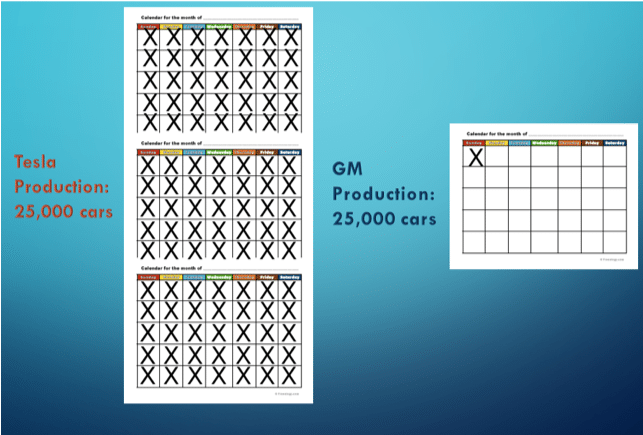The past few years have been filled with news of the progress major technology companies are making on the autonomous vehicle front. Companies such as Google, Tesla, Uber, Lyft, and Waymo are making major strides in the space. One tech company, however, that has remained surprisingly aloof, is Apple. Despite a heated race, Apple seems to be making little public progress.
This is likely because they are approaching the market in a completely different way compared with every other major tech company, and are simply waiting until they have a working product to unveil their approach. While every other tech company interested in this space is either trying to manufacture cars or partner with car companies, I believe that Apple wants to stay completely in the software space, and to be for autonomous driving what Google is for smartphones.
Apple wants to be the Android of smart cars, the software behind the majority of autonomous vehicles.
We don’t know a lot about Apple’s secretive self-driving platform. What we do know is that it is large, accelerating, and, knowing Apple, likely to be ambitious. We also know the unique engineering approach Apple is taking to approach this product, the current competitive landscape of the autonomous driving market, and the history of hardware versus software battles.
From this information, there is a very strong argument to be made that Apple wants to capture the entire autonomous car market by developing a “plug-n-play” technology. This would be in the form of a system that can be attached to most cars to turn them into self-driving vehicles, regardless of make and model. This tech would likely be supported by software for shared services such as car sharing, ride-sharing, and ride-hailing.
This theory is supported by the information below.
#1 Apple’s Autonomous Vehicle Design Looks Like Plug-N-Play
Take one look at Apple’s current self-driving fleet and you’ll probably notice two things: first, the autonomous package is visibly attached to the outside of the car, and second, the package is really ugly. This is in direct contrast to what other companies have done, which is to integrate the self-driving technology into the car.
Perhaps the best explanation for an ugly, exterior system of sensors and related hardware is that Apple wants to build an attachable self-driving system. They are not designing one car or a set of cars in conjunction with their self-driving technology, but rather looking to have a package that can be used with any car. Of course, their ultimate goal would be to make this exterior system less noticeable, sexier, or both, but right now their priority is to get it working properly.
#2 Tech Companies Struggle to Manufacture Cars
The autonomous car market is chock-full of partnerships and acquisitions between tech companies and car and hardware companies. Instead of entering the car manufacturing industry themselves, they want to either partner with an automotive manufacturing company or outsource production, much like phone companies do. There is only one major technology company in the market today that is pursuing the autonomous driving space without a major car company or hardware company partnership: Apple.
Tesla, the one company that is going it alone in both manufacturing cars and creating the software inside them, is in dire straits. One incredible statistic that shows just how hard it is to ramp up manufacturing is that Tesla (with a decade of manufacturing experience) produces the same number of cars in three months that GM (with a century of experience) produces in 1 day. This is even despite the fact that electric cars have about 20 moving parts while ICEs have over 2,000.
Going it alone is a gargantuan task that most companies have opted to avoid. The fact that Apple has yet to partner, and has no visible plans to manufacture cars themselves, supports the idea that perhaps they have no desire to create an autonomous car from scratch.
#3 Market Dynamics Favor Open Software
There is no denying that Apple is a major player in the smartphone and laptop space. They have a globally recognized brand and are one of the most profitable companies in the world. However, what many people overlook is their worldwide market share. In 2017, Apple accounted for just 14% of smartphones worldwide and iOS accounted for just 20% of mobile operating systems worldwide (see Charts 1 and 2 below). Android on the other hand accounted for 72% of the global operating system market.
Chart 1: Smartphone Vendor Global Market Share (Source: Statista)
Chart 2: Mobile Operating System Global Market Share (Source: Statcounter)
Even more striking, Apple accounted for just 8% of the PC operating system market, while Windows accounted for 91% (see Charts 3 and 4 below).
Chart 3: PC Vendor Global Market Share (Source: Statcounter)
Chart 4: PC Operating System Global Market Share (Source: Wikipedia)
Furthermore, while the operating system market has tended to consolidate, the hardware market has remained fragmented (see Charts 5 and 6 below). In general, consolidation is good for business (for the winners) and fragmentation is bad for business.
Chart 5: Global Smartphone Sales by Vendor (Source: Statista)
Chart 6: Mobile Operating System Market Share Worldwide (Source: Statcounter)
Perhaps Apple has noticed this and wants to diversify its market approach. Perhaps it has learned how hard it is to maintain its hold on the phone market – always having to improve both its hardware and its software and having trouble in providing enough product differences to satisfy the increasingly diverse needs of the consumer population. Or, perhaps it just believes a different approach to the autonomous car market is needed and so it is looking to control it much like Windows and Google have done for the PC and smartphone market.
Summary
Apple appears to be attempting to build autonomous driving technology that works with every “dumb” car in the world; to build an attachable unit that makes every “dumb” car “smart”. This theory becomes immediately apparent when considering three factors. First, tech companies looking to build autonomous cars from scratch are doing so by partnering with car companies or hardware firms – Apple is the exception. Second, we understand from the market dynamics of smartphones and laptops that it can be incredibly lucrative to develop software that is open to all hardware manufacturers to use as they please. Finally, Apple’s design stands out from all competition in that it truly looks as if it were designed to fit on any car.
Time will tell whether this is indeed Apple’s strategy, and, perhaps more interestingly, whether this plan works.
Until then, play close attention to this fascinating space!
Note: The author wrote this article before the Volkswagen deal with Apple was announced. However, this deal still does not change the author’s opinion as there still seems to be no indication that this partnership is being made with the goal of actually designing and building a new autonomous car.
Ian Glennon is an ex-MBB consultant who currently offers one-on-one coaching sessions to help you nail your consulting interview. Find out more here.
Image: Pexels








